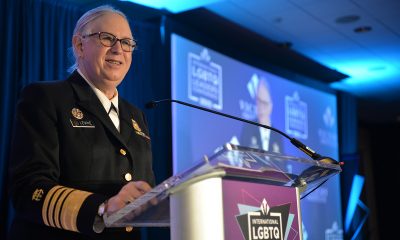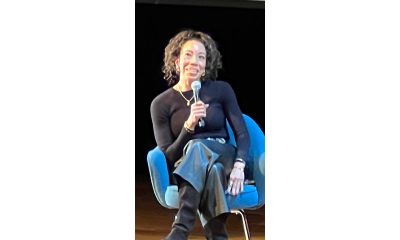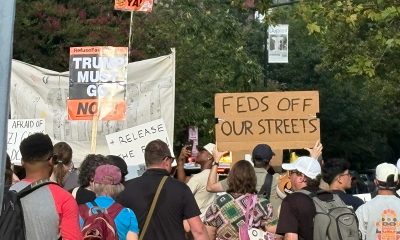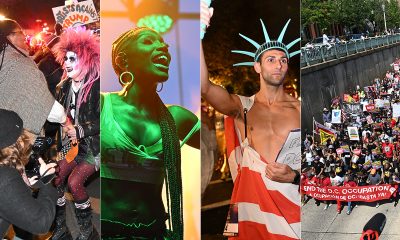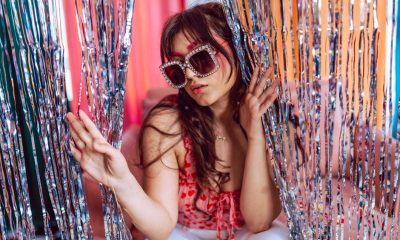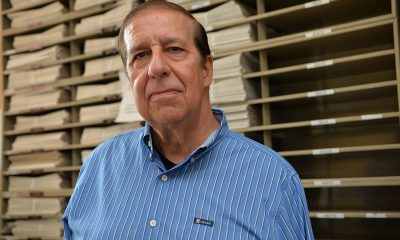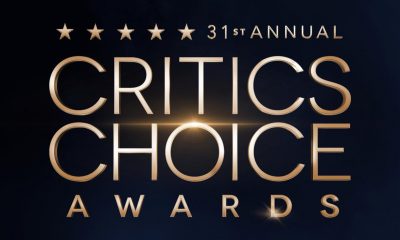Arts & Entertainment
Images and outrage
Controversy aside, ‘Hide/Seek’ is a groundbreaking show
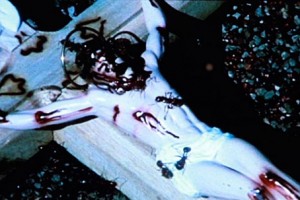
A still from the video that caused controversy in the current "Hide/Seek" exhibit at the National Portrait Gallery.
Catcher Yogi Berra once famously called it “deja vu all over again.” But it was Karl Marx who perhaps defined it best as “when history repeats itself — the first time as tragedy, the second time as farce.”
That was the feeling at least for a moment last week, when officials at the National Portrait Gallery censored a video component of its exhibit titled “Hide/Seek,” the show about gay and lesbian sexual love and its impact on American art. Complaints by right-wing Catholics over 11 seconds of a depiction of ants crawling on a crucifix was enough for NPG director Martin E. Sullivan to decide to turn tail and yank an entire half-hour-long 1987 video, titled “A Fire in My Belly” — a meditation on the ravages of AIDS by David Wojnarowicz, the gay artist who died from HIV-related causes in 1992.
Shades of Robert Mapplethorpe and the cancellation of an exhibit of his erotically charged photos by the Corcoran Gallery of Art in 1989. And now as then GOP politicians are on the attack under the banner of “no promo homo,” and also as before, another gallery — this time Flashpoint — courageously took up the challenge and began to show the offending video.
But what about the groundbreaking NPG show itself, which opened in October and runs through mid-February? It’s stunning with 105 pieces of art from the canon of America’s greatest artists of the past century and more, depicting the ways in which their sexual orientations expressed themselves — usually coded and concealed — visually on canvas and other surfaces and as images in motion.
The exhibit is titled as a playful reminder of the childhood game of hide-and-seek, when concealment is the first task for survival. “HIDE/SEEK — Difference and Desire in American Portraiture,” with its range and breadth of seeing and finding works of art that dare speak, however sotto voce, the name of taboo love, boldly snaps in two the several decades-long taboo, welded firmly in place after the Mapplethorpe fiasco, of acknowledging same-sex desire in major U.S. museums.
The range of artists begins with Thomas Eakins and his scenes of naked boys swimming and passes through other giants of American painting — John Singer Sargent, George Bellow, Georgia O’Keefe, Jasper Johns, Robert Rauschenberg, Andy Warhol and others — to our own new century. But as co-curator Jonathan D. Katz contends, “seeking and noticing” the sexual subtexts of their work “are two very different acts,” and this exhibit “seeks to turn such seeing into noticing.”
As with their work itself, nothing is as it seems at first. Therefore, “HIDE/SEEK” features, says Katz, “straight artists representing gay figures, gay artists representing straight figures, gay artists representing gay figures, and even straight artists representing straight figures, when of interest to gay people/culture.”
For Katz, considered the dean of academic study of gay and lesbian art history, this has been the curatorial work of more than 15 years. Katz shaped this exhibit with Smithsonian historian David C. Ward, who has openly called Katz “my camerado — per Walt (Whitman).”
Ward also says that Katz, who founded the gay and lesbian studies program at Yale University and is the first tenured professor in LGBT studies in the nation, “is a model of the engaged scholar” and as a result ran afoul of academic norms in the past for his avowed interest in these subjects.
“He’s someone who managed to be thrown out of two institutions, the University of Chicago and Johns Hopkins University,” Ward says, “for daring in the 1970s to want to write about gay and lesbian Americans.”
In the magisterial catalogue accompanying the exhibit, Katz confesses that their choice of subjects is “firmly canonical” and rooted in “the register of great American artists … within the American mainstream,” so that many artists, less well known, have been excluded. The key objective, says Katz, is to show that “the assumption that same-sex desire is at best tangential to the history of American art” is “utterly unsupportable.”
With “HIDE/SEEK,” and even with the Wojnarowicz censorship fresh at hand, it now seems safe to say, in Katz’s words, that the “pervasive silencing of same-sex desire in accounts of American portrait painting” is over.
Perhaps the most interesting feature of the exhibit comes in its revelation that American artists at the turn of the 20th century could in fact be much more open about their subject matter than those of the mid-20th century in a period haunted by sexual McCarthyism and the hunt for “reds and gays” in government, the schools and the clergy. During that era only on the fringes of the entertainment world, and there not always, could different sexual proclivities find open or even closeted refuge.
In other words, same-sex desire could be expressed more freely in the arts at that earlier time “prior to the advent of ‘homosexuality’ as an available category,” says Katz, even though same-sex desire acted upon was literally a crime. But this was before an explicit “homo/hetero binary” was established as the enforced norm, he says, and before “gay” and “straight” were paired as strict opposites instead of subtle inflection points on a spectrum of the sort spelled out by Alfred Kinsey in his scale of zero to six.
Key to this transformation, Katz says, was when “sexual behavior evolve(d) into sexual identity, from what you did to what you were.” In the earlier era, after all, sexual identity was premised not on the gender of one’s sexual partner but rather on one’s own gendered role —insertive or receptive — in the sex act. As Katz notes, “it was socially acceptable to penetrate a queer” for sexual relief and as “tolerable stand-ins for women.”
Thus, Katz begins the exhibit catalogue with a searching exegesis of George Bellows’ print from 1917, “The Shower Bath,” where two naked men are depicted front and center – one thin and effeminate, looking seductively over his shoulder and thrusting his posterior provocatively at a second man, beefy of build, butch and masculine, whose towel barely conceals his sexual arousal. Opposites in every way, “they are made a pair,” says Katz, and what he calls “the odd couple” are “the focal point of this image.” But the forward homoeroticism of the Bellows print did not hamper its commercial success at the time. And Bellows himself was a man devoted to his wife and children.
There is, of course much more in this exhibit, with many works coded with layers of longing, that NPG director Sullivan — before the controversy erupted over the video — spoke of “with pride” as offering “a new lens with which to view the panorama of American life.” It is indeed, as he said earlier, “a sumptuous survey of more than a century of American portraiture,” asking “new questions and risking new interpretations.” It dares to be at once risky and risque.
With portraits such as these, we enter the lives of others, to explore how identities were forged in the past. With portraits such as these, we end up staring at ourselves.
Arts & Entertainment
2026 Most Eligible LGBTQ Singles nominations
We are looking for the most eligible LGBTQ singles in the Washington, D.C. region.
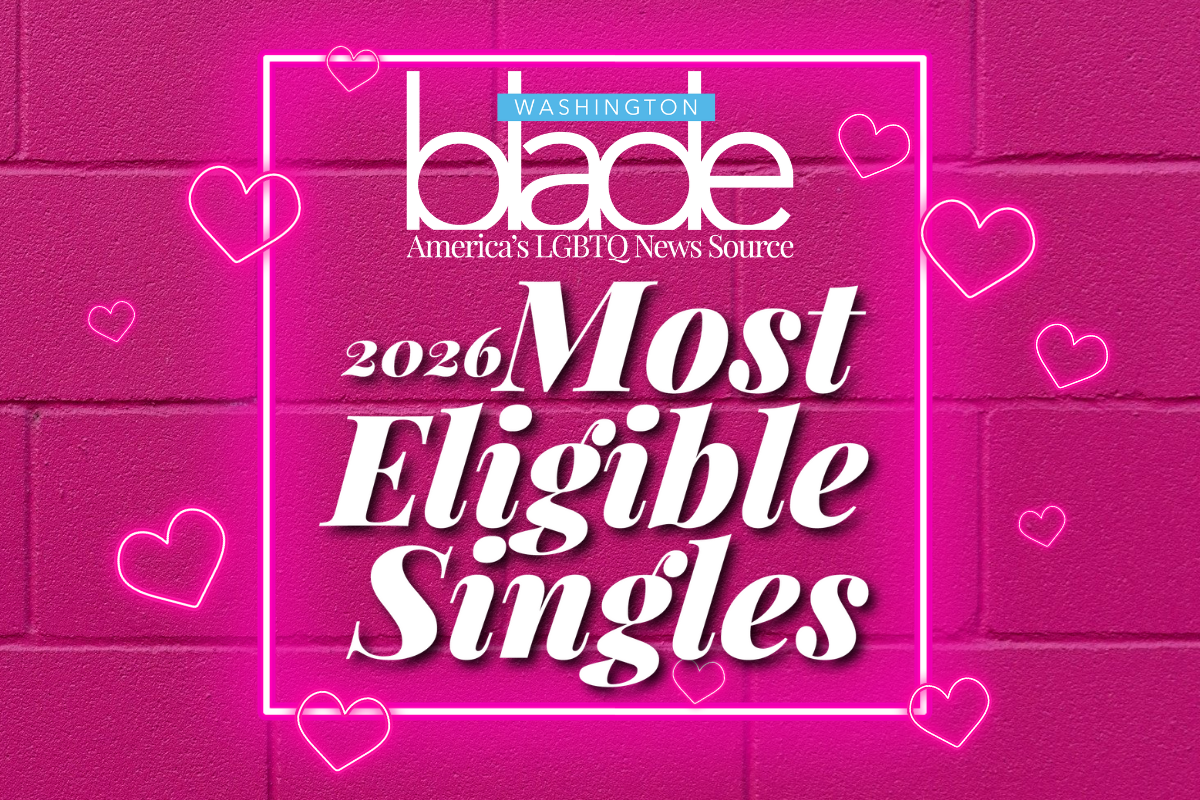
Are you or a friend looking to find a little love in 2026? We are looking for the most eligible LGBTQ singles in the Washington, D.C. region. Nominate you or your friends until January 23rd using the form below or by clicking HERE.
Our most eligible singles will be announced online in February. View our 2025 singles HERE.
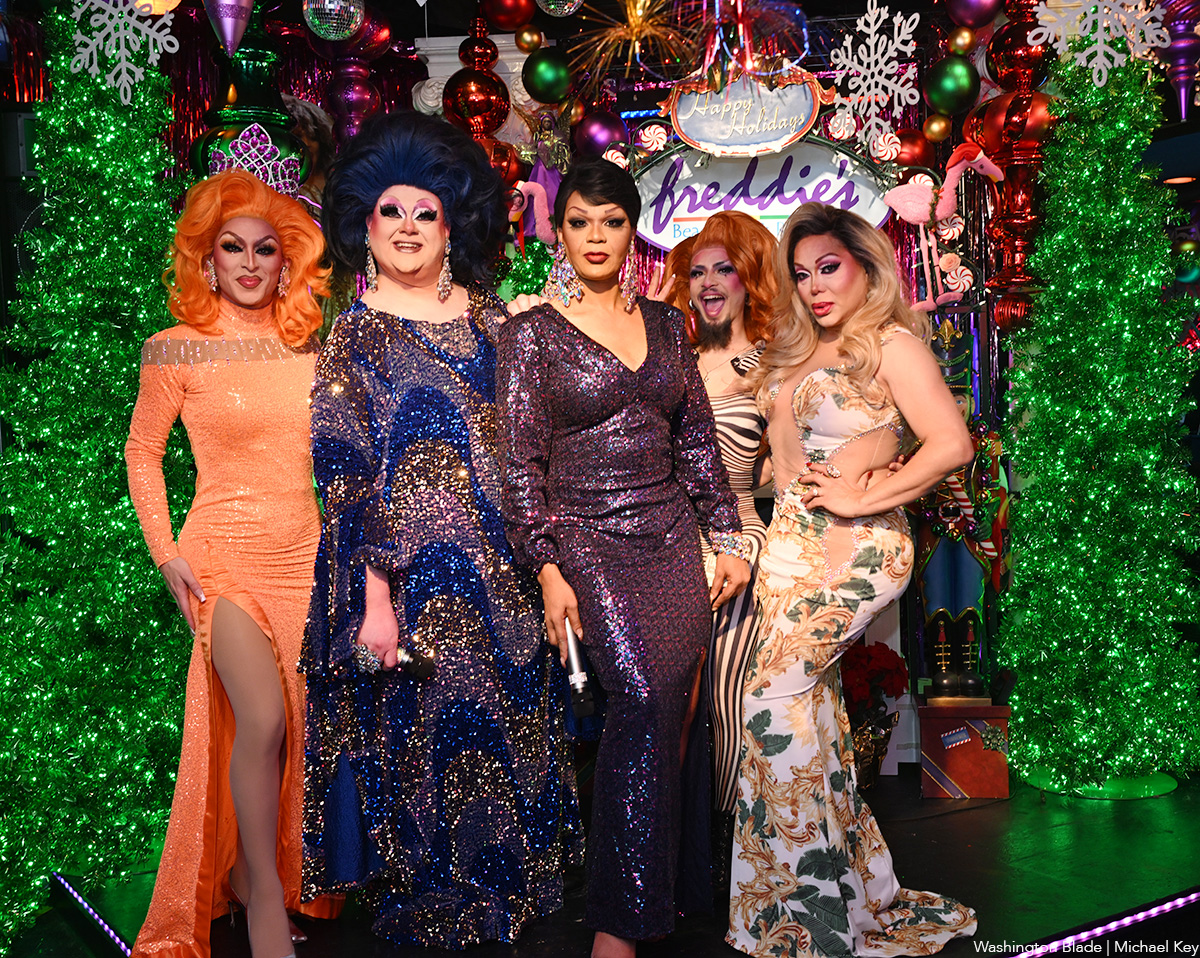
The Freddie’s Follies drag show was held at Freddie’s Beach Bar in Arlington, Va. on Saturday, Jan. 3. Performers included Monet Dupree, Michelle Livigne, Shirley Naytch, Gigi Paris Couture and Shenandoah.
(Washington Blade photos by Michael Key)

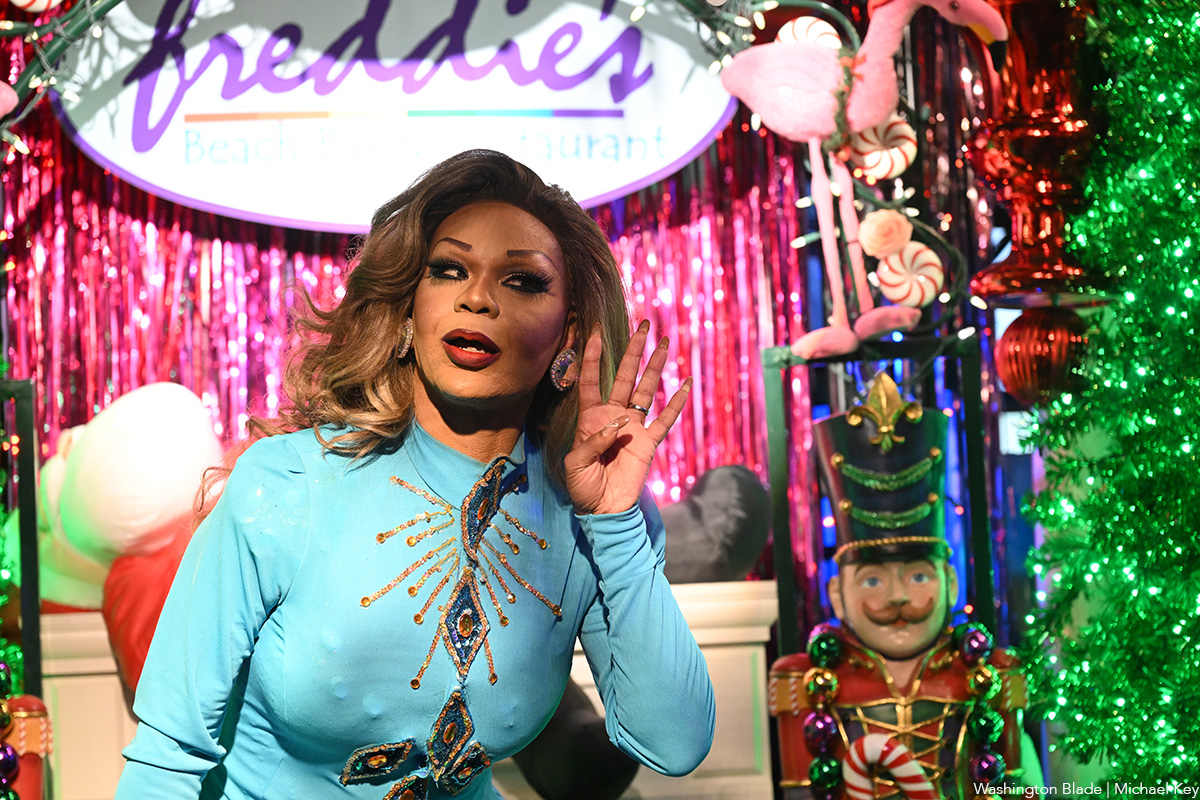





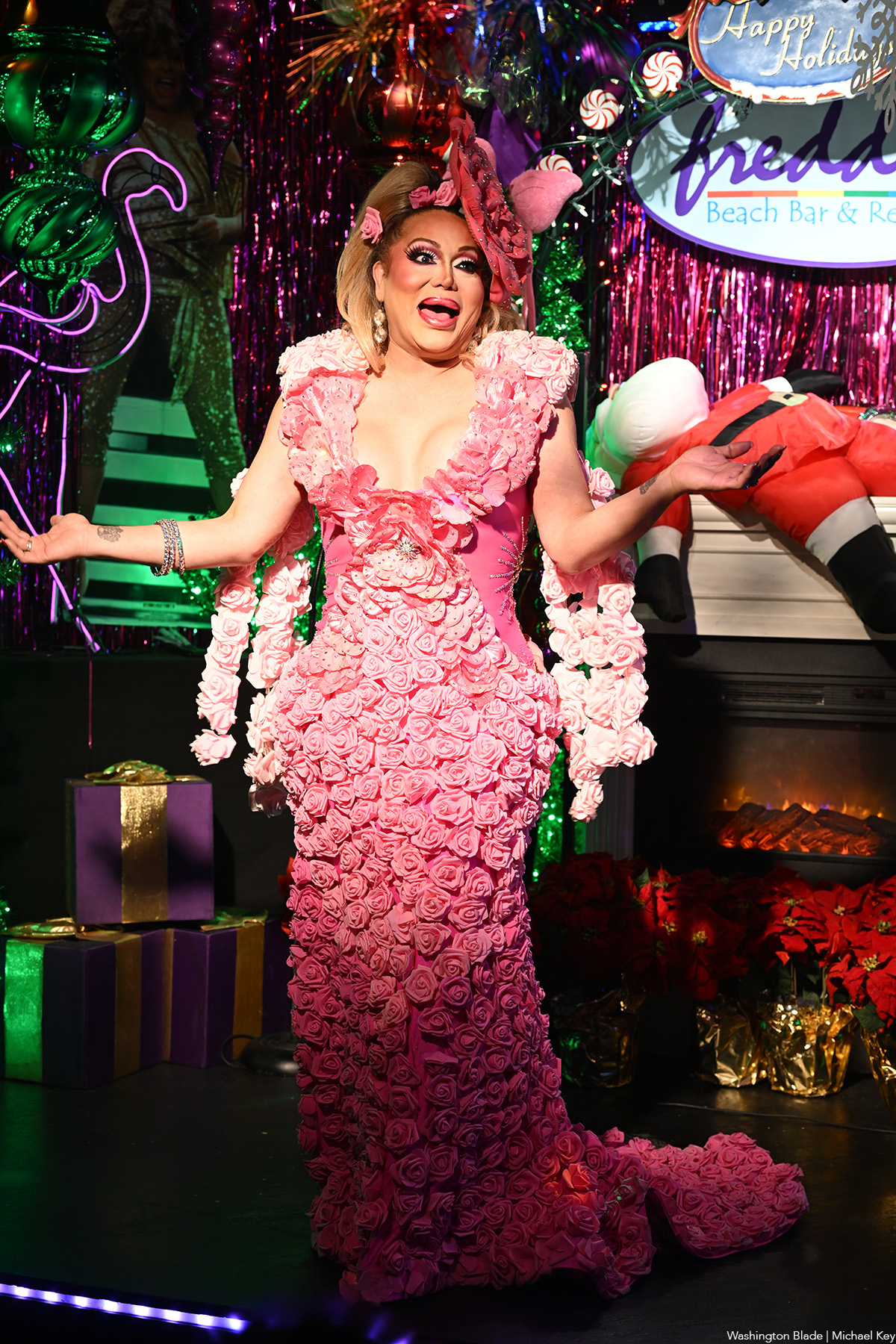
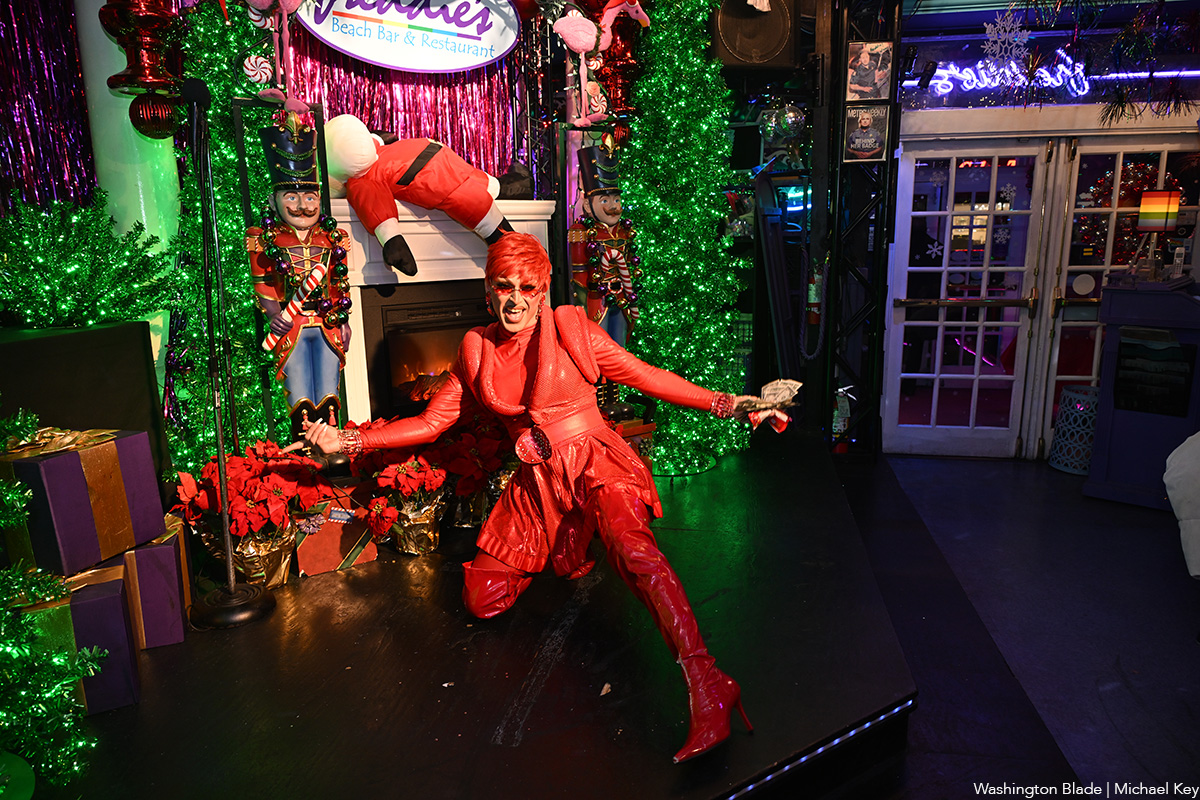
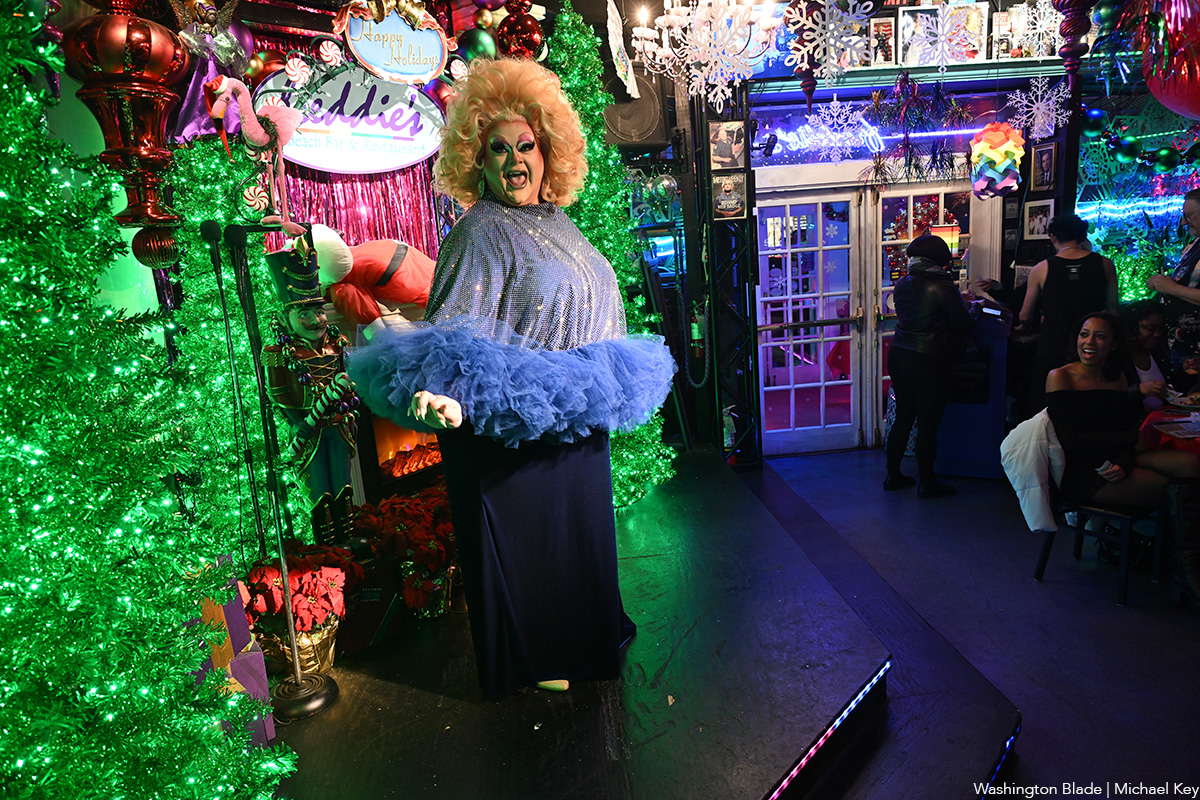
a&e features
Queer highlights of the 2026 Critics Choice Awards: Aunt Gladys, that ‘Heated Rivalry’ shoutout and more
Amy Madigan’s win in the supporting actress category puts her in serious contention to win the Oscar for ‘Weapons’

From Chelsea Handler shouting out Heated Rivalry in her opening monologue to Amy Madigan proving that horror performances can (and should) be taken seriously, the Critics Choice Awards provided plenty of iconic moments for queer movie fans to celebrate on the long road to Oscar night.
Handler kicked off the ceremony by recapping the biggest moments in pop culture last year, from Wicked: For Good to Sinners. She also made room to joke about the surprise hit TV sensation on everyone’s minds: “Shoutout to Heated Rivalry. Everyone loves it! Gay men love it, women love it, straight men who say they aren’t gay but work out at Equinox love it!”
The back-to-back wins for Jacob Elordi in Frankenstein and Amy Madigan in Weapons are notable, given the horror bias that awards voters typically have. Aunt Gladys instantly became a pop culture phenomenon within the LGBTQ+ community when Zach Cregger’s hit horror comedy released in August, but the thought that Madigan could be a serious awards contender for such a fun, out-there performance seemed improbable to most months ago. Now, considering the sheer amount of critics’ attention she’s received over the past month, there’s no denying she’s in the running for the Oscar.
“I really wasn’t expecting all of this because I thought people would like the movie, and I thought people would dig Gladys, but you love Gladys! I mean, it’s crazy,” Madigan said during her acceptance speech. “I get [sent] makeup tutorials and paintings. I even got one weird thing about how she’s a sex icon also, which I didn’t go too deep into that one.”
Over on the TV side, Rhea Seehorn won in the incredibly competitive best actress in a drama series category for her acclaimed performance as Carol in Pluribus, beating out the likes of Emmy winner Britt Lower for Severance, Carrie Coon for The White Lotus, and Bella Ramsey for The Last of Us. Pluribus, which was created by Breaking Bad’s showrunner Vince Gilligan, has been celebrated by audiences for its rich exploration of queer trauma and conversion therapy.
Jean Smart was Hack’s only win of the night, as Hannah Einbinder couldn’t repeat her Emmy victory in the supporting actress in a comedy series category against Janelle James, who nabbed a trophy for Abbott Elementary. Hacks lost the best comedy series award to The Studio, as it did at the Emmys in September. And in the limited series category, Erin Doherty repeated her Emmy success in supporting actress, joining in yet another Adolescence awards sweep.
As Oscar fans speculate on what these Critics Choice wins mean for future ceremonies, we have next week’s Golden Globes ceremony to look forward to on Jan. 11.
-

 Photos4 days ago
Photos4 days agoThe year in photos
-

 Sponsored3 days ago
Sponsored3 days agoSafer Ways to Pay for Online Performances and Queer Events
-

 District of Columbia2 days ago
District of Columbia2 days agoTwo pioneering gay journalists to speak at Thursday event
-

 a&e features2 days ago
a&e features2 days agoQueer highlights of the 2026 Critics Choice Awards: Aunt Gladys, that ‘Heated Rivalry’ shoutout and more

